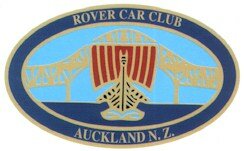
INTERVIEW WITH HAROLD SMITH*
One of the team who worked on the original jet engines, and then on the Rover gas turbines.
After working on the Pluto Pipeline which pumped oil under the channel, I joined the Rover Company in 1942. Now during the War, Rolls Royce was the "mother factory", and all the others did what Rolls Royce told them to.
Of jet engines and high security...
At first Rolls Royce were doubtful of the Whittle engine, and said it wouldn't work. It was assigned to the Rover factory, which soon showed it was workable. Meanwhile Mr. Lombard had redesigned the engine to remove the bends and allow straight-through gas flow, and thereby made it better, but Captain Whittle didn't like this. Even Lombard was doubtful "Well, it will either blow itself up in ten minutes, or prove itself" he said before the test, and before long it had gone for half an hour. Of course there was high security where I was working with the jet engine team. When the tea trolley came round the chap would knock at the door, then I'd come out for a cuppa. (Harold has a pronounced Yorkshire accent) My wife Violet didn't know about the project at this stage - very hush-hush.
When they saw that the jet engine was going to work, Rolls-Royce took it over, so I lost contact before it was fitted in the bomber for the first test flight. The Rover Company in turn got the Meteor V12 engine project, to redevelop it for tanks, and after that for 7 months I worked on the F-Head engine project.
At this stage an engineer, Mr. Bell, from New Zealand, came with the idea of a gas turbine car engine with the turbine linked by a drive shaft to the back axle of the car. I was one of only three people in the Rover Company who had worked on the jet engine, and being on the mechanical side they said "Go onto this project".
Well, we started from scratch; this was not Whittle's engine at all. First we miniaturised the turbine until we finally had quite tiny turbine chambers.
Enter JET 1…
The number plates at Burnley were coming up to JET, and the Rover Company acquired the first three of the set JET 1, 2 and 3. There were only four people in this team and I built the engine personally. When the turbine discs came, I fitted the blades, and finished the machining. Balancing was quite a job
The finished engine was mounted in a P4 body and so this is my baby JET 1- its now in the British Museum. It was beautiful to drive. There were only two pedals, one to go and one to stop. The gears operated from a choke-like knob below the dash, and it went as quickly backwards as forwards. It was so quiet. And there was power. Peter Wilks tested it on a road in Europe, and achieved over 150mph before he ran out of road - he ran out of road before pushing the accelerator flat.
Other Rover Gas Turbines ...
Smaller units were installed in the T3 and in an early version of the P6 body. In the Le Mans 24 hour race we were in the pit next to the Ferraris. Their cars roared in and out, but our car came in so quietly it was christened then and there 'the vacuum cleaner'. It could not be an official entry at Le Mans and Graham Hill started 30 seconds after the other drivers. By the second lap he was in 7th position. He kept this foot on the accelerator and operated the other (brake) pedal as he went into the corners, coming out again with full power and tremendous acceleration - although an unofficial entry it came 11th that year.
Some gas turbines were used to start the Vulcan Bombers, and the Hovercraft, and small versions were used for very rapid pumping. Some went into boats. I was in one of the boats in the 6 hour race in Paris, but they both had mishaps - the one porpoised.
The Company allowed me to drive a prototype of the Range Rover called the Road Rover. It had a square body but the independent springing of the Range Rover. I went three times round the clock in that, and only once had any trouble. Then by agreement it had to be sold back to the Company.
The Leyland merger…
I got a gold watch for 25 years service in the Company and soon afterwards (1967) Leyland took over and a lot of staff had to go. So I got my watch one year and my cards the following year.
Since 1955 my son Keith has been working in a factory in Coventry. First it was Hawker-Siddeley, then Bristol-Siddeley, and now Rolls-Royce, and he has made turbines as I did. Our other son came to South Africa in 1966 and we followed him here. After a spell, in the Transvaal we have settled on the Natal South Coast at Umtwalume.
* Source unknown, possibly South African. Found in the ROver Car Club of Auckland's Archives.

